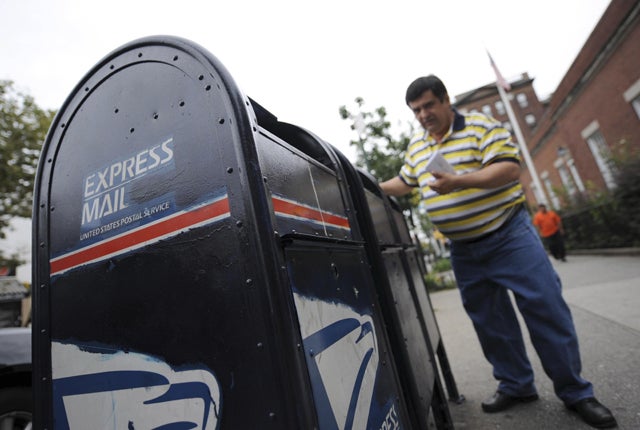The U.S. Postal Service (USPS) defaulted on its debt last night. No, it has nothing to do with the partial shutdown of the government. The USPS is not affected by that. Rather, it has its very own, parallel fiscal crisis that threatens its viability as an institution.
Yesterday’s default—on $5.6 billion owed to the U.S. Treasury for funding of retiree health benefits—will be the third such default in as many years. The USPS just doesn’t have the money. After seven straight years of deficits, the USPS is just about out of cash. And things are likely to get worse before they get better: Postmaster General Patrick Donahue reports that by mid-October, the government-owned enterprise will have no more than five days’ worth of cash on hand. That’s a dangerously low amount. With an unexpected uptick in expenses or slowdown in revenue, the USPS’s coffers could be wiped clean.
A shutdown on operations is unlikely. Mail will be delivered next month, but the present path is unsustainable.
Some blame the Postal Service’s financial woes on the very debts it has defaulted on, which are used to pre-fund the USPS’s obligations to its retirees. But the root cause goes deeper: the rapidly shrinking volume of mail, as consumers move to electronic forms of communication. Since 2007 alone, the amount of first-class mail has shrunk 30 percent. Another 40 percent may be gone by 2020.
The Postal Service itself has long been sounding the alarm on this growing financial crisis. To address the short-term lack of cash, it has requested an increase in postage rates. But more fundamental reform is needed to give the Postal Service a chance at long-term survival.
Congress, however, has blocked reform at every turn. Plans to save money by reducing Saturday deliveries and reducing the number of post offices have been blocked on Capitol Hill. Unless these and other restrictions on the USPS’s efforts to reform itself are lifted, the Postal Service’s future—and taxpayers’ pocketbooks—will be at risk.
































